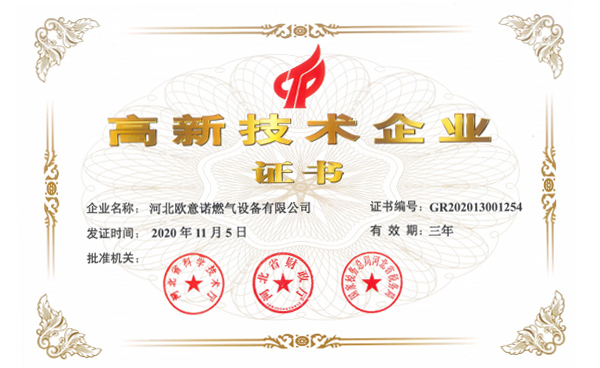
Dec . 05, 2024 05:32
Back to list
Pressure Reduction Skid Solutions for Efficient Fluid Management and Enhanced System Performance
Understanding Pressure Reduction Skids Essential Components for Safe Operations
In various industries, controlling the pressure of gases and liquids is crucial for safety, efficiency, and operational effectiveness. One of the pivotal components in achieving this control is the pressure reduction skid. This equipment plays an essential role in managing the pressure of fluids transported through pipelines, ensuring they are reduced to appropriate levels before they reach their end-users or processing facilities. In this article, we will explore the construction, functionality, and significance of pressure reduction skids.
What is a Pressure Reduction Skid?
A pressure reduction skid is a pre-packaged, modular assembly designed to control and reduce the pressure of fluids. It typically consists of several components, including pressure regulators, valves, filters, and flow meters, all mounted onto a robust framework or skid. The skid design allows for easy transport and installation, making it an ideal solution for various field applications, including oil and gas operations, chemical processing, and water treatment facilities.
Essential Components of a Pressure Reduction Skid
1. Pressure Regulators These are the heart of the pressure reduction skid. They automatically adjust the pressure of the fluid to the desired level, ensuring that it remains stable despite changes in upstream conditions.
2. Valves Control valves are essential for managing the flow of fluids through the skid. They can be manually or electronically operated, allowing for fine-tuning of the flow rate and pressure.
3. Filters To protect sensitive equipment downstream, filters remove impurities and particulates from the fluid. This is particularly critical in applications such as fuel gas where contaminants can cause significant damage.
4. Flow Meters These devices measure the flow rate of the fluid, providing real-time data that helps operators monitor and control the system’s performance effectively.
5. Instrumentation and Control Systems Advanced pressure reduction skids often include sophisticated instrumentation for monitoring pressure and flow, along with control systems that automate operations, enhancing safety and reliability.
Applications and Importance
Pressure reduction skids have wide-ranging applications across various sectors
pressure reduction skid

- Oil and Gas Industry Here, they ensure that natural gas or crude oil is delivered at safe pressures to processing facilities or pipelines. This is essential not only for operational efficiency but also for environmental safety.
- Chemical Processing In chemical plants, accurate pressure reduction is vital for ensuring the proper reaction conditions and preventing hazardous situations.
- Water Treatment In municipal and industrial water systems, pressure reduction skids help manage the pressure in water distribution networks, ensuring reliable service and protecting infrastructure from excessive pressure.
The significance of pressure reduction skids cannot be overstated. They contribute to the overall safety of operations by preventing pressure surges that can lead to catastrophic failures and ensuring that equipment operates within its design parameters.
Designing a Pressure Reduction Skid
When designing a pressure reduction skid, several factors come into play
- Flow Capacity Understanding the maximum flow requirements is crucial in selecting the right size and type of regulators and valves.
- Fluid Characteristics The type of fluid being processed—whether gas, oil, or water—will dictate material selection and design considerations, such as corrosion resistance.
- Operating Conditions Temperature, pressure, and environmental factors must be considered to ensure that the skid performs optimally under varying conditions.
- Regulatory Compliance Skids must adhere to industry standards and regulations to ensure safety and reliability. This includes materials certification and safety features such as pressure relief valves.
Conclusion
Pressure reduction skids are vital components in managing fluid pressures across a wide range of industries. Their ability to ensure safe and efficient operations underpins the reliability of many processing systems. As technology progresses, the design and functionality of these skids will continue to evolve, incorporating advanced automation and intelligent monitoring systems. Ultimately, the integration of effective pressure reduction solutions is crucial for promoting safety, efficiency, and environmental stewardship in industrial operations. Understanding the importance and workings of pressure reduction skids will empower industry professionals to implement best practices, enhancing both operational performance and safety outcomes.
Next:
Latest news
-
Safety Valve Spring-Loaded Design Overpressure ProtectionNewsJul.25,2025
-
Precision Voltage Regulator AC5 Accuracy Grade PerformanceNewsJul.25,2025
-
Natural Gas Pressure Regulating Skid Industrial Pipeline ApplicationsNewsJul.25,2025
-
Natural Gas Filter Stainless Steel Mesh Element DesignNewsJul.25,2025
-
Gas Pressure Regulator Valve Direct-Acting Spring-Loaded DesignNewsJul.25,2025
-
Decompression Equipment Multi-Stage Heat Exchange System DesignNewsJul.25,2025

